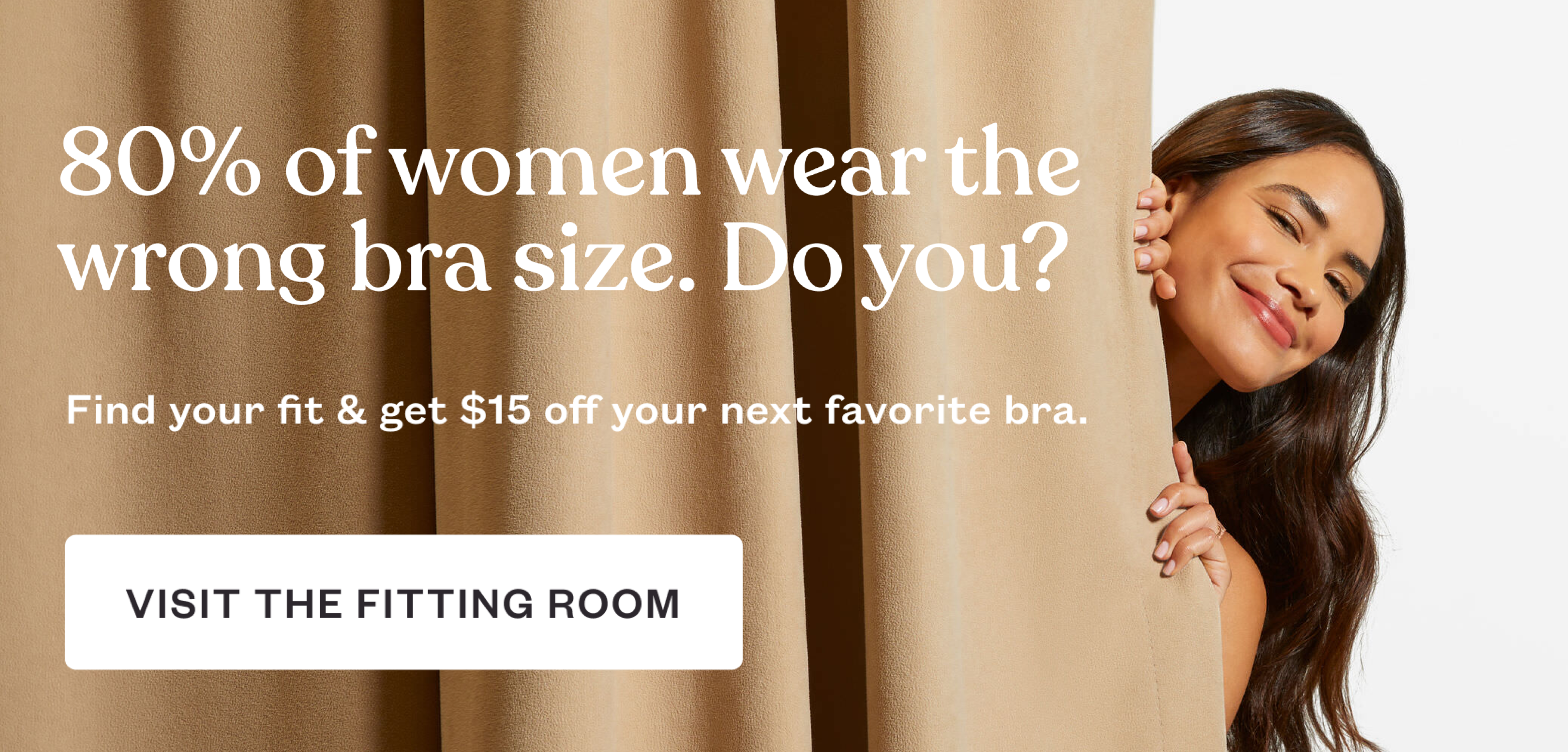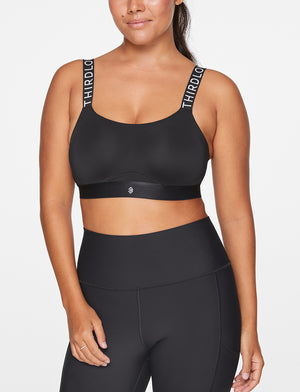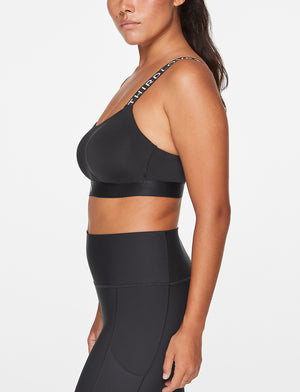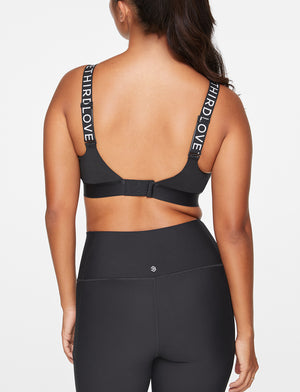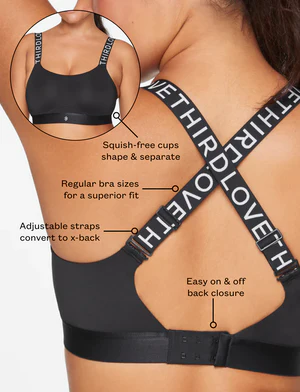Exchanges free for 60 days for all orders. Please try on the bra to ensure a good fit, making sure to leave the original tags attached. We only accept underwear in unworn condition, with original tags, in its unopened original polybag. Items marked final sale are not eligible for return or exchange. If something’s not right, we can help. Our Fit Experts are available via live chat, or email to answer any questions you might have.
Read moreFinally, Bra Sizes Explained

How are Bra Sizes Determined?
On top of being highly technical garments, bras are also complicated in the way their sizing works. For example, a woman who wears a 32G cup isn’t necessarily a true G cup. Confusing, right? But stay with us — we’ll explain how bra sizes work in just a bit. It’s no wonder that 80 percent of women are wearing the wrong size when one’s cup letter doesn’t directly translate to their cup volume. See why your measured bra size may not be your actual bra size.
How to Find Your Bra Size
First things first, let’s talk about sizing a bra the traditional way. Bra size measurements are calculated based on your band size (number) and cup size (letter), which are typically determined by using a tape measure around your rib cage and bust. If you’d rather skip the dressing room, ThirdLove offers an online Fitting Room Quiz that matches you with your bra size and recommended style based on your unique breast shape. Regardless of what method you choose, you’re left with a number and letter that is your bra size.

How Should a Bra Fit?
There are a few things to check when trying on a new bra to determine whether it fits you well:
- Cups. While you're wearing the bra, your breasts should each rest within their respective cups. The cups should cover the entire breast, with your nipples sitting at about the halfway point of the cups. Further, there should be no cup gaping or spillage.
- Band. The band should fit you snugly without being too tight. It should sit flush against your skin, just loose enough that you could put two fingers beneath it. Remember that the band provides most of the bra's support, so this is crucial.
- Straps. The bra's straps should stay up on your shoulders without slipping down. They should provide light support without carrying the bulk of the breast weight. However, they shouldn't be so tight that they dig into your skin or cause other issues.
- Underwire placement. For underwire bras, ensure the wires sit comfortably below your breast tissue, following the natural curve of your breast. It shouldn't poke or dig into your breast.
- Comfort. A bra size that fits properly should feel like an extension of you, not something you can't wait to rip off after a long day. There should be no itching, poking, or pinching.
Find more information on how a bra should fit on our website.
The Right Fit is More Important than Measurements
While understanding bra sizes is a great starting point, it is important to remember that the perfect fit goes beyond the band sizes and cup sizes. Yes, that 34C might technically be your "size," but if it's leaving you fidgeting all day, it's time to re-evaluate. A well-fitting bra should not only be the correct size but also comfortable, supportive, and flattering. Why? Because every brand, style, and even fabric can slightly change how a bra fits.
Bra sizes can vary significantly between different manufacturers. Equally, you might find that in some bra styles, you need to go a cup size up for added coverage, while others work with your usual size. It's all about the design and fit. Don't be shy about experimenting with different cup sizes and styles to find your comfort zone. In the end, your true size is the one that feels best, not the one printed on the tag.
Additionally, different activities can demand different fit requirements. A sports bra, for instance, is designed to provide maximum support during high-impact workouts and might, therefore, be tighter than your regular bra.
How to Determine Bra Cup Size
Now, here’s where things can get a little tricky. For reference, any cup with a 34 band size is considered a “true cup” size. This means that a 34AA is in fact a AA cup, just as how a 34B is a true B cup. However, a 34B is also equivalent in cup volume to a 30D, 32C, and a 36A. All three aforementioned sizes are a B cup despite what their cup letter indicates. This is called sister sizes.
Take a look at our bra size chart below for reference. All bra sizes in the same row across share the same sister size, aka they’re all equal in cup volume. Let’s do another bra cup size comparison: if you wear a 32D, you are actually a true C cup. An easy way to determine your true cup size is simply to locate your bra size on the chart below and see which cup letter is paired with a 34 band in your row.

The Importance of Sister Sizing
Knowing your sister size can be helpful when adjusting your bra size. For example, if the cups fit comfortably, but the current band size is too loose, you’ll have to try a smaller band size as well as a larger cup size to maintain the same cup volume. So if you were in a 36F, going down in the band size alone would result in a cup size too small. Though the 34F sounds like it has the same cup volume as the 36F, it’s actually one cup size smaller. To keep the cup volume the same, you’ll need to try a 34G, which ensures a snug and comfortable fit, while maintaining the same cup volume as the 36F.

How Should a Bra Fit?
There are a few things to check when trying on a new bra to determine whether it fits you well:
- Cups. While you’re wearing the bra, your breasts should each rest within their respective cups. The cups should cover the entire breast, with your nipples sitting at about the halfway point of the cups. Further, there should be no cup gaping or spillage.
- Band. The band should fit you snugly without being too tight. It should sit flush against your skin, just loose enough that you could put two fingers beneath it. Remember that the band provides most of the bra’s support, so this is crucial.
- Straps. The straps of the bra should stay up on your shoulders without slipping down. They shouldn’t be so tight, however, that they dig into your skin or cause other issues.
Find more information on how a bra should fit on our website.
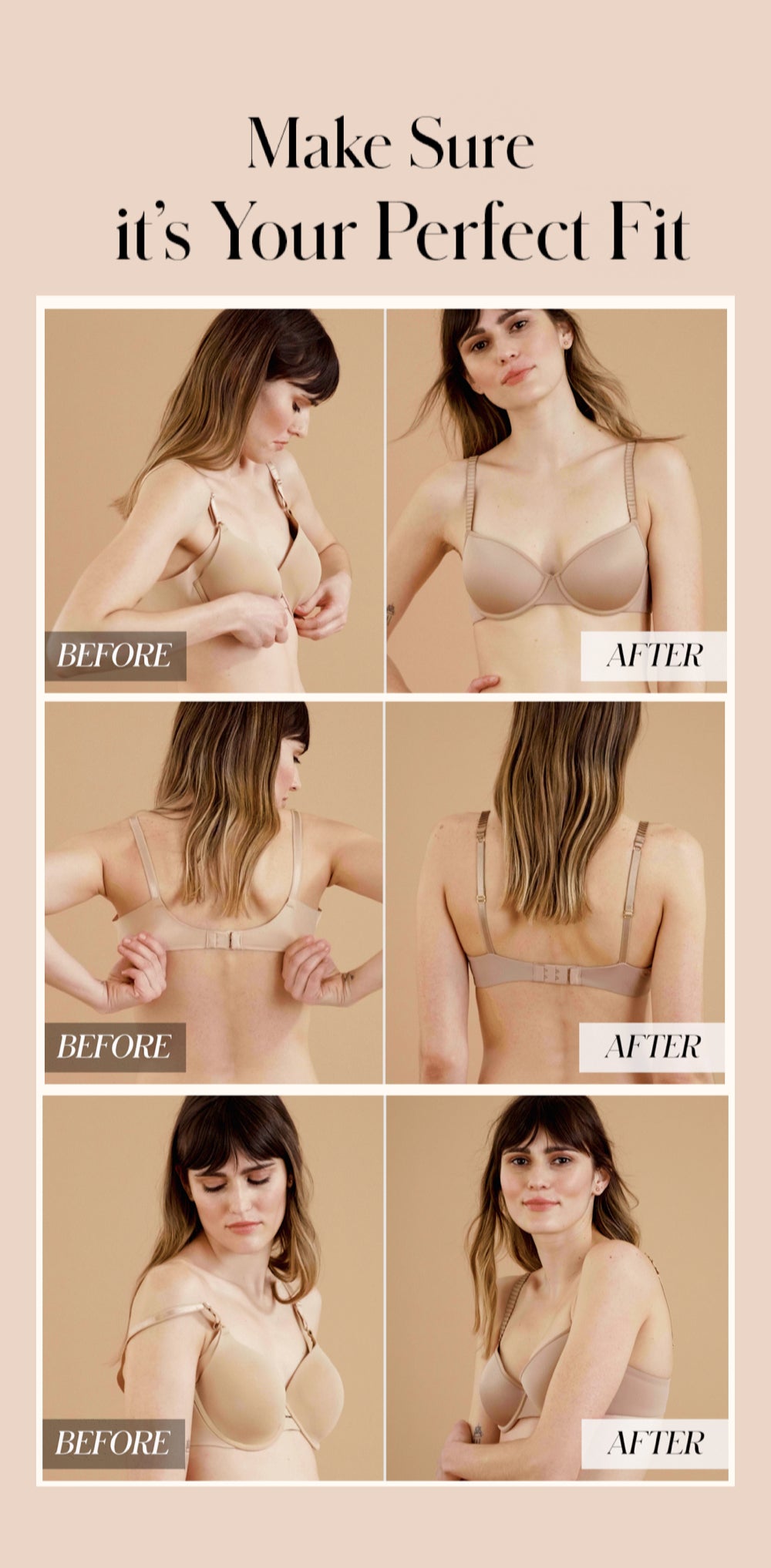
Common Bra Fit Issues
Many women struggle to find a good-fitting bra. Watch out for these common fit issues when bra shopping:
- Cup gaping. One common bra fit issue is cup gaping. This is a fit issue where there is space between the breast and the cup of the bra. Usually, this issue indicates that the cup size is too large. Consider going down a cup size or going with a sister size.
- Spillage. Some women find that their bra causes spillage. The most common types are front, back, and side spillage. This issue can create awkward silhouettes beneath clothing and feel uncomfortable to the wearer.
- Band fit issues. If your bra band is too tight or too loose, it may be uncomfortable or make your bra less supportive. The band should fit snugly but not too tight when set on the loosest hook. Also, keep in mind that if you notice hair-like fibers coming from your bra band at any point, this indicates the elastic has broken. You’ll need to replace the bra as soon as possible to ensure you have a fully elastic and supportive band.
- Underwire discomfort. If your bra is the wrong size, it may cause the bra’s underwire to dig into your skin. This could be painful and even lead to infections down the road, so it’s critical to ensure a bra’s underwire fits you correctly before buying it.
- Straps too tight or too loose. If your bra straps are too tight, they may leave indentations on your skin and cause discomfort. If they’re too loose, you may find yourself needing to pull them back up every so often. Opt for bras with adjustable straps and non-slip features for the best results, and ensure you get your correct bra size.

Differences in Bra Sizes Depending on Bra Type
So, how do bra sizes work for different types of bras?
There are two primary ways of sizing bras depending on type. The first is standard bra sizing, which indicates the band size (a numeral) and the cup size (a letter). Some breast or bra size examples you might see according to this sizing method include 34A, 38B, and so on. This is the way that most bra types and styles are sized, making it essential to familiarize yourself with your own traditional bra size and its sister sizes. At ThirdLove, our bras come in a huge range of band and cup sizes, even including half cups so you can find your perfect fit!
$104 Save
24/7® Classic
T-Shirt Bra
The other way to size bras is more simplified. Certain types of bras, such as sports bras and bralettes, come in sizes XXS through XXL instead of in specific band-cup size ranges. These bras tend to be less structured, making this simpler range of sizes realistic. At ThirdLove, we recognize that there are a lot of people looking for wireless bralettes, bras, and sports bras that still require good support to feel comfortable. That's why we created wireless bras with Precise Sizing™, offering 3x more sizes than other wireless bras to account for larger and smaller cups. Our wireless bras will provide amazing support for up to G cups!
$96 Save
24/7® Classic
Wireless Bra
Similarly, we know how awful sports bras can be. We found that most were either comfortable but unsupportive, or supportive but restricting and uncomfortable. That's why we designed a better sports bra! Our Kinetic Adjustable Sports Bra comes in your regular bra sizing to provide you with the best support and comfort possible, regardless of your size!
$63 Save
Kinetic
Adjustable Sports Bra
Bra Size FAQs Answered
- How often should I measure my bra?
It's recommended to measure your bra size every six months to a year or if you experience significant weight changes, pregnancy, or menopause.
- Why do my bra sizes vary between brands?
Different brands may use slightly different sizing standards or have unique models, leading to size variations.
- How do bra sizes work?
Bra sizes have two components: a band size, which is a number, and a cup size, which is a letter. The band size is the measurement around your underbust in inches. The difference between your bust measurement and your underbust determines the cup size.
- How do I convert my bra size to bralette or sports bra size?
These often use S, M, and L sizing. Check the brand's size chart, which usually correlates their letter sizes with bra sizes.
Find Your Perfect Fit at ThirdLove
There is a lot to think about when looking for the perfect bra! At ThirdLove, we offer a variety of bras in a wide range of sizes, even including half cups, to suit every shape and size. If you’re still not following along (you’re not alone!), you can always take our quick online Fitting Room Quiz to figure out your perfect fit.
Tags:

